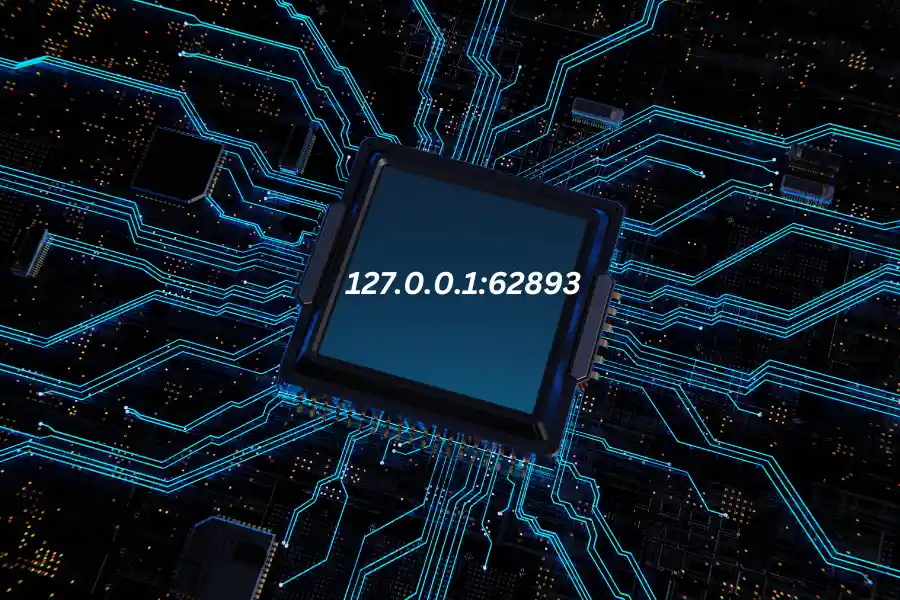Taking care of hosting issues such as 127.0.0.1:62893 is vital in web development. The network on your system relies on this address; updating it is rarely hard. Whatever how skilled you are, issues with 127.0.0.1:62893 may be irritating. This blog lists quick fixes for usual bugs and sets 127.0.0.1:62893. We’ll cover how localhost works, the role of port 62893, and the steps to fix connection and performance issues.
By once you’re done, you’ll be able to deal with 127.0.0.1:62893 issues and make sure the local network works well. Together, let’s resolve the 127.0.0.1:62893 issue!
What is 127.0.0.1:62893?
127.0.0.1:62893 is a unique address used on your computer for local communication. The IP address 127.0.0.1, called “localhost,” means your computer, while port 62893 is like a channel for sending and receiving data. Redis often uses this combination, a tool that stores data in memory. Developers use 127.0.0.1:62893 to test and develop applications on their machines, making it easier to fix problems before going live.
Power of Local Testing with 127.0.0.1:62893
For developers, a smooth workflow is crucial. Local testing, where apps run and are tested on your computer, is critical. Using 127.0.0.1:62893 lets developers test quickly without needing external servers, speeding up debugging and changes. It provides a controlled environment without outside problems, supports offline work, and makes testing more accessible and faster. This works for Redis and any setup using local services or data stores.
Local Server on 127.0.0.1:62893
Running a local server on 127.0.0.1:62893 allows developers to host and test applications directly on their computers. This setup uses the loopback IP (127.0.0.1) and port 62893 for internal communication, commonly leveraging Redis or similar tools. It provides a controlled environment for rapid development and testing without relying on external servers. It guarantees quicker communication, easier troubleshooting, and offline working skills, so increasing the creation process efficiency.
Common Issues with 127.0.0.1:62893
Using 127.0.0.1:62893 for local development can encounter common issues:
Connection Refused: If the local server (like Redis) isn’t running, check and start the service using your system’s service manager.
Port Conflict: Ensure no other application is using port 62893. Adjust application settings to match the correct port configuration.
Firewall Issues: Check firewall settings to allow port 62893 for local connections.
Troubleshooting Steps and Solutions
Verify Service Status
Problem: Redis or a similar service using port 62893 may not run.
Solution: Check and start the service via the Services app on Windows. On macOS/Linux, use `ps aux | grep redis` in the terminal to start Redis if it is not running.
Check Port Configuration
Problem: Applications may incorrectly configure or attempt to connect using the wrong port number.
Solution: Ensure application settings specify port 62893 correctly. Verify Redis server configuration aligns with the documentation.
Address Firewall Interference
Problem: Firewall settings might block connections to 127.0.0.1:62893.
Solution: Adjust firewall rules to allow inbound traffic on port 62893 for localhost, ensuring it isn’t blocked.
Resolve Conflicting Applications
Problem: Other applications using port 62893 can create conflicts.
Solution: Identify and temporarily stop conflicting processes using tools like `netstat` or `lsof`. Consider configuring conflicting applications to use alternative ports if feasible.
Preventive Measures and Best Practices
Automate Service Startup: Configure Redis or related services to start automatically on system boot to avoid manual startup.
Use Dedicated Ports: Consider configuring Redis with a non-standard port (e.g., 6379) to prevent conflicts with other applications using port 62893.
Review Firewall Settings: Regularly check and adjust firewall rules to allow traffic on port 62893 for local connections.
Version Control and Consistency: Use Git or similar version control systems to manage configuration files for consistency and easy rollback of changes.
Monitor Resource Usage: Monitor CPU and memory usage to optimize Redis and application settings for efficient performance during development.
FAQs
What is 127.0.0.1:62893?
During development, local servers like Redis are often used with the local loopback address (127.0.0.1) and port number (62893).
Why do I see a ‘Connection Refused’ error with 127.0.0.1:62893?
This error indicates that the local server on port 62893 (e.g., Redis) isn’t running. Start the server or check its configuration.
How do I start the Redis server on port 62893?
Start Redis using system services (Windows) or terminal commands (macOS/Linux), ensuring it’s configured for port 62893.
What if another application is using port 62893?
Use tools like netstat (Windows) or lsof (macOS/Linux) to identify conflicting applications. Stop them or configure them to use a different port.
How do I configure my firewall for port 62893?
Adjust firewall settings to allow inbound and outbound traffic on port 62893. Create exceptions if needed for local development.
Conclusion
Managing 127.0.0.1:62893 is crucial for local development efficiency. By automating service startup, using specific ports, checking firewall settings, and monitoring resources, developers can work effectively and resolve issues promptly, ensuring a stable environment for application development.
If you want to learn more, visit our blog, diagonaux.com.

Hi there! I’m Admin and writer at Diagonaux.com, with over 30 years of experience. I love playing with words, whether it’s covering news, diving into business topics, or creating beautiful poems and stories. Making complex things easy to understand is my superpower. Join me on this writing journey, where I bring words to life in various exciting ways!





One response to “Troubleshooting 127.0.0.1:62893: Common Issues and Solutions (July 2024)”
[…] Also Read: https://diagonaux.com/troubleshooting-127-0-0-162893-common-issues-and-solutions-july-2024/ […]